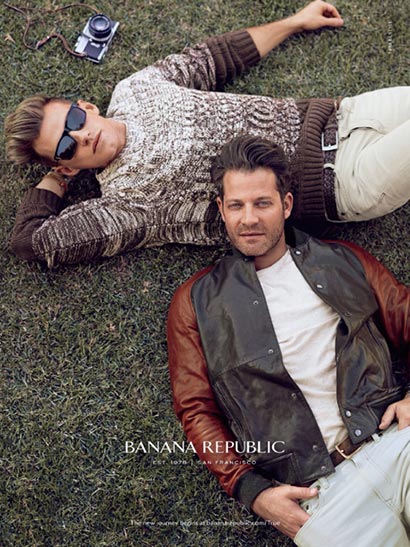Opinion | Keep the rainbows, give us representation
 Internationally, brands like Banana Republic and Tiffany & Co have successfully featured same sex couples and LGBTQ audiences in their advertising as part of an attempt to include gay audiences. And yet South Africa, famed for our diversity, continues to represent homosexuals either as clichés or stereotypes. Wouter Lombard, head of talent at M&C Saatchi Abel, explains why this must change.
Internationally, brands like Banana Republic and Tiffany & Co have successfully featured same sex couples and LGBTQ audiences in their advertising as part of an attempt to include gay audiences. And yet South Africa, famed for our diversity, continues to represent homosexuals either as clichés or stereotypes. Wouter Lombard, head of talent at M&C Saatchi Abel, explains why this must change.
Marketing budgets need to work extra hard these days, and the LGBTQ audience is very much a niche market. Put these two facts together, and it’s understandable why so few brands have created advertising specifically targeting this market. That’s fine. I don’t expect brands to reach out to every single market segment – funds simply don’t allow for it.
What’s not fine, though, is that our ‘normal’, mainstream media is noteworthy for its lack of inclusivity. This means that gay people – especially young gay people – seldom (if ever) see anyone who they can identify with, either on screen, online or in print. Imagine how that feels. Apart from further isolating young people struggling with issues of identity, it also skews heterosexuals’ view of what it means to be gay, because they have very few references – and that only further fuels the stigmas.
In my opinion, one of contributing factors in South Africa, is that big brands want to play it safe. They’d rather avoid anything contentious, in case it alienates their audience. In this instance, it means keeping the LGBTQ community out of advertising. And, when they do include the LGBTQ community, they often do so in a way that isn’t altogether appropriate.
Gays and lesbians are either stereotyped (think of the flamboyantly camp Harold of the Netflorist campaign), or used as comic relief –the attempt at normalisation gets buried under hype (remember how 7de Laan’s onscreen gay kiss in 2017 made headlines?). Most often, it’s treated as niche advertising for a niche market, appearing only in niche media – such as gay publications. Or, most egregious at all, the gay and lesbian characters included in advertising have little going for them besides their sexuality – it’s as if they have no purpose besides, well, being gay.
So, what needs to change? For a start, it would be great if a big brand with big budget stepped forward to show the rest how it should be done.
As for how it should be done, the answer is, with authenticity. I don’t want “gay ads” aimed at me because I am gay. I don’t want everyday products repackaged with a big gay bow just so that they can appeal to my ‘pink rand’ (as marketers have referred to the value of the LGBTQ market). And I don’t want to have to seek out gay publications (usually of poor quality, because of a lack of funding) or go to gay events just to find messaging that appeals to me or see other people who are like me.
Instead, I want advertisers to recognise that being gay is the least interesting thing about me. I want normal ads, which just so happen to feature LGBTQ people. As soon as gays and lesbians are featured in an ad in a way that makes them appear to be separate to the mainstream community, they become stereotypes. And the advertiser loses out on a chance to tap into real, powerful insights about the community.
Ideally, we should see greater representation throughout all media, not just in advertising – especially in a country as diverse as South Africa. So, let’s start the conversation. Let’s throw away those stereotypes and start creating content that displays society in all its real, diverse glory. After all, it’s our diversity that lies behind the magic that is the Rainbow Nation. So, let’s not forget the rainblow flag either.
Leave a Reply